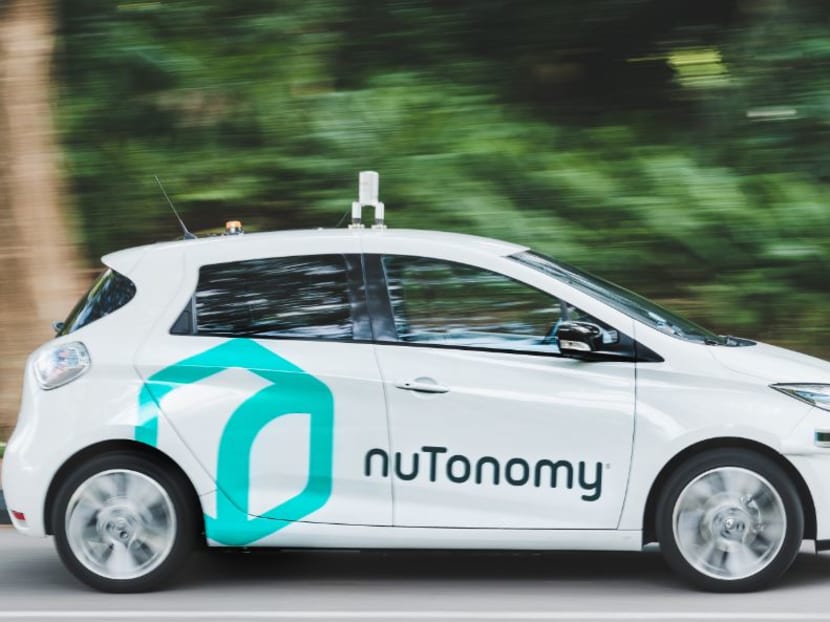Main obstacle to driverless revolution — humans
Even when manufacturers develop fully autonomous cars, it will still take many years for them to be freely embraced by governments and consumers.
Brilliant technologies transform the magical into the banal. An idea that seems outlandish to one generation becomes commonplace to the next.
So it has been with electricity, space flight and the Internet. So it is likely to prove with driverless cars.
The past few weeks have seen a flurry of announcements. Singapore has launched the world’s first public trial of a robo-taxi service.
Uber and Volvo announced that they would pioneer an autonomous taxi fleet in Pittsburgh within weeks. Ford said it would build its first mass-market driverless car by 2021.
To their backers, autonomous cars cannot arrive quickly enough. Conventional cars are inefficient, dangerous and dirty.
They sit idle for 95 per cent of their lives, clogging up city streets and car parks. When moving, they sometimes smash into each other, killing 3,500 people every day around the world.
Ninety per cent of accidents are caused by human error. Cars pollute the environment, accounting for 45 per cent of oil burnt.
The widespread adoption of fully autonomous and, better still, electric cars could therefore be a massive boon to mankind.
It could lead to a far more efficient use of resources, save lives, and reduce congestion and pollution.
Futurologists envisage small fleets of shareable, connected cars constantly whizzing around our cities picking up passengers on demand.
McKinsey forecasts that 15 per cent of new cars could be fully autonomous by 2030.
TECHNOLOGY AND HUMANS STANDING IN THE WAY
But two obstacles block their widespread adoption. The first remains technological. For all the astonishing advances made in recent years, it is phenomenally difficult to replicate humans as sensory beings.
How does a car distinguish between a plastic bag blowing across a road and a runaway dog?
How does a car nudge its way through a throng of people outside a football stadium?
Engineers argue that the genius of self-driving cars is their connectedness. “When human drivers make a mistake, the individual learns from it,” says one Silicon Valley pioneer. “When a self-driving car makes a mistake, then every other car will learn from a mistake once an engineer has fixed it. It is just a matter of time before our technology surpasses human capacity.”
But sceptics compare autonomous car technology with Zeno’s dichotomy paradox: Every leap will take us halfway to our destination without ever reaching it. No matter how hard the technology proves, it may be the easier part of the puzzle.
A stiffer challenge remains the human. Even when manufacturers and software engineers develop fully autonomous cars in which they have total trust, it will still take many years, if not decades, for them to be freely embraced by governments and consumers.
First, there is the instinctive human resistance to handing over control to a robot, especially given fears of cyber-hacking.
Second, for many drivers, cars are an extension of their identity, a mechanical symbol of independence, control and freedom. They will not abandon them lightly.
Third, robots will always be held to far higher safety standards than humans. They will inevitably cause accidents. They will also have to be programmed to make a calculation that could kill their passengers or bystanders to minimise overall loss of life.
This will create a fascinating philosophical sub-school of algorithmic morality.
“Many of us are afraid that one reckless act will cause an accident that causes a backlash and shuts down the industry for a decade,” says the Silicon Valley engineer. “That would be tragic if you could have saved tens of thousands of lives a year.”
Fourth, the deployment of autonomous vehicles could destroy millions of jobs. Their rapid introduction is certain to provoke resistance. There are 3.5 million professional lorry drivers in the United States.
Fifth, the insurance industry and legal community have to wrap their heads around some tricky liability issues.
Under what circumstances is the owner, car manufacturer or software developer responsible for damage?
Some governments, such as those of Singapore, China and the United Kingdom, as well as several states in the US, are creating permissive regulatory and legal environments.
Regulators can certainly speed adoption by approving designated lanes for autonomous cars, for example, and devising international safety rules and standards.
Conversely, politicians may yet succumb to the pressure of public fears and vested interests, and frustrate the roll out of self-driving cars. Autonomous-car visionaries may soon be able to perfect the technology.
But their success may be determined by how good they are — in Stalinist terminology — as engineers of human souls. Financial Times
ABOUT THE AUTHOR:
John Thornhill is Innovation editor at the Financial Times.







